#pioneer filmaker
Photo

19th February 1972 saw the death of John Grierson, the film director and producer.
One of the founding members of the British Documentary Movement, Grierson is seen by many as Scotland's most important filmmaker.
Grierson was born in the old schoolhouse in Deanston, near Doune, Scotland, to schoolmaster Robert Morrison Grierson from Boddam, near Peterhead, and Jane Anthony, a teacher from Ayrshire.His mother, a suffragette and ardent Labour Party activist, often took the chair at Tom Johnston's election meetings Johnston being the driving force behind our Hydro-electric scheme.
The family moved to Cambusbarron, Stirling, in 1900, when the children were still young, after Grierson's father was appointed headmaster of Cambusbarron school.
After serving on minesweepers during World War 1, he graduated from Glasgow University and served a Rockefeller fellowship in the USA, where he developed an interest in mass communications and spent some time in Hollywood. On his return to Britain, he became Assistant Films Officer at the Empire Marketing Board and was commissioned to make Drifters, a documentary about the North Sea herring fleet. In 1933 Grierson became Films Officer at the General Post Office film unit, and in both these capacities he played what has later been argued to be a pivotal role in British film culture.
Grierson's specific achievement as a director is not easy to assess, as the documentary movement took a collaborative approach to production. Grierson is only credited as directing Drifters; however, he exerted significant influence on the talented team of young filmmakers he attracted around him. Drifters contains many of the traits that would later characterise the documentary movement's output, notably an emphasis on the social interaction and everyday routine of the fishermen at sea, and on the economic importance of the fishing industry, and some technically innovative 'underwater' shots achieved at the Plymouth Marine Biological Research Station. The new montage style of Soviet cinema and the poetical style of Robert Flaherty were clear influences on Grierson.
In June 1937 Grierson resigned from the GPO and formed Film Centre, an advisory and co-ordinating body for the documentary film movement. It was this kind of supervisory capacity that characterised Grierson's role and influence on factual film, with him also acting as production advisor to Films of Scotland, and, throughout the war, serving as Film Commissioner at the National Film Board of Canada.
After a brief and fairly fruitless period in New York, Grierson returned to the UK in 1946. In February 1948 he was appointed to the Films Division of the Central Office of Information. Over the next two years he attempted to re-establish a major programme of government documentary production, but was repeatedly frustrated by political opposition and public sector spending cuts provoked by the post-war economic crisis. In the 1950s, Grierson acted as joint head of Group 3, the production arm of the National Film Finance Corporation, spent several years in independent television, before finishing his career teaching at a Canadian university.
Critical opinions regarding the impact and influence of Grierson on British film are sharply polarised, possibly more so than with any other prominent British filmmaker. His supporters claim that he single-handedly established the principle of public service filmmaking, analogous to Reith at the BBC. His detractors believe that the legacy of Grierson is more modest, that the documentary movement films reached limited audiences and their cultural impact has been exaggerated. Because so much of his vision was expressed through managing the work of others rather than by direct involvement in making specific films, his legacy as a director per se is in many ways a side-issue.
Grierson went into hospital for a health check-up in January 1972; he was diagnosed with lung and liver cancer and was given months to live.During his time in hospital he spent time dictating letters to his wife, Margaret, and received visitors; however, he fell unconscious on 18th February and died on the 19th. In his wishes for his funeral he had detailed his desire to be cremated. Also according to his wishes, his urn was placed in the sea off the Old Head in Kinsale, and his brother Anthony, who had died in August 1971, had his ashes placed at the same time.A small flotilla followed the Able Seaman, which carried the ashes, and when the urns were lowered into the water, the fishing boats sounded their sirens
14 notes
·
View notes
Note
NOT VIV COMPARING HELLUVA’S “ARTISTRY” TO JOHN WATERS IN HER LIKES

Anon you opened up the fames of fury in me lol, so da tweets 🤌:
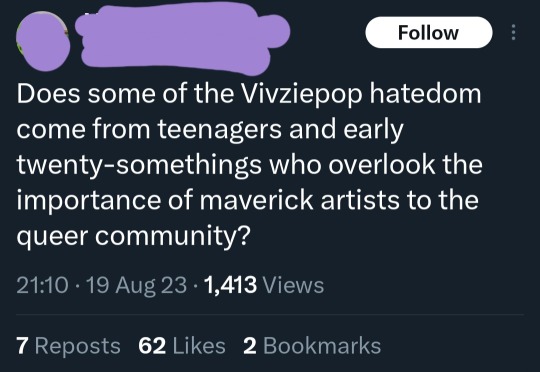


╭( ๐_๐)╮ can I just break from the critical side of myself and just be a "hater" and call pure BULLSHIT on these tweets. I aint even going to go into full structured critical analysis on these tweets this post of mine will be long winded rambles. This user is just pulling all these nuanced and highly revered genres in art and film ha even highly renowned filmaker, artist, actor and writer John Waters, JOHN FLIPPING WATERS and saying Brandon Roger *is* his equivalent on the YT front, thats disrespectful thats John Waters have respect tsk. Also none of those genres is the 1st thought in my head when thinking about the hellaverse (gags) and that it draws from.
Cabaret surrealism
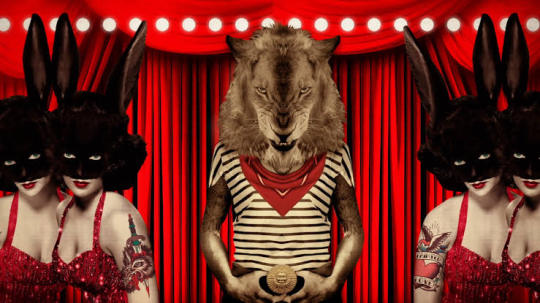
Goth comics
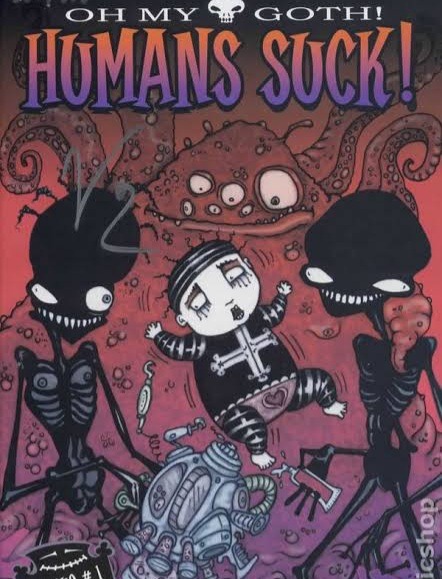
Camp genre movies (a lot of examples)
And of course Brandon Rogers *is* home grown John Waters
This John Waters (ಠ_ಠ)

These tweets are nonsense I'm sorry but damn it is. Big hoity-toity words used and using comparisons thats just nonsensical and again lets just throw in queer people. Like how this tweet says the hatedom is teenagers or young 20-somethings or YOUNG QUEER PEOPLE 🙃🙃🙃. Im 26 queer as hell and I dislike helluva boss and it should cater to my age range but besides that can we for the love of peat stop invalidating the opinions of young people like I'm serious fuck off if you think like that.
I have had conversations and interactions with teenagers, young people and young queer people that wow the things I learn from them, its simply amazing.
And just love how Viv liked a tweet of someone invalidating the opinions of young people just because they young and just "haters" on Helluva boss, young people are people too. They have the right to voice their opinions so stop invalidating it and stripping away their agency aswell because this person is dictating on young queer people on their say on what they want to see better in queer media, that is not your decision to make on their behalf, if they criticise Helluva boss and hate it thats their decision to have stop guilt tripping them on their dislike of helluva boss because Viv is some modern maverick in queer media, she aint.
Viv's queer works DOES NOT compete with the true mavericks in queer media through the ages. Viv's work is a shallow and poor at its attempts in showing queer stories, representation and its handling of sensitive and queer themes.
Vivienne's creations are problematic, it is can exist but I like many others across all walks of like, status and age is going to call her work out for the bull is pumping out.
In all just another bootlicking tweet sucking up to Viv on how revolutionary her works are, how youngsters are too immature to see its pioneering effors in modern queer media and how helluva boss is groundbreaking in the themes/genres it draws from and the artists it has involved is comparable to the greats
...
its all BULL TO THE SHIT.
93 notes
·
View notes
Text
January 1, 2024: The Great Train Robbery (1903)
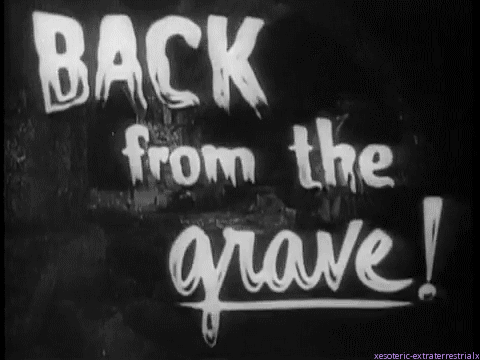
I LIIIIIIIIIIIIIIIVE
So. It's been a while. Life has been busy for the last couple of years, lemme tell you. I love this blog and I love movies, but writing can be...time-consuming for me. Anyway, I figure, why not start this whole thing over again, huh? Well, mostly. Am I gonna get to 365 movies this year? Frankly, that's unlikely, for a number of reasons. BUT! I can at least start small. And, since doing action films in January is a bit of a blast from the past...why not go all the way back this time? Plus, hey - it's a good way for me to get back into the swing of things.
Film history time!

Without going too far into it, the modern film industry began in the 1890s. The first moving pictures were mostly short documentaries, showing live as captured through multiple successive images. L'arrivée d'un train en gare de La Ciotat is often called the first film publicly shown, but that's a misconception. What is true, however, is that the film was made by two luminaries in film history: the Lumiere brothers. Their invention, the cinématographe, was essentially an early film camera, and the brothers used it to document real life.
However, for every good 19th century inventor, there's got to be a rival. And honestly, when you're talking about the 1890s, there's only one real rival to speak of for a given inventor: the Wizard of Menlo Park.
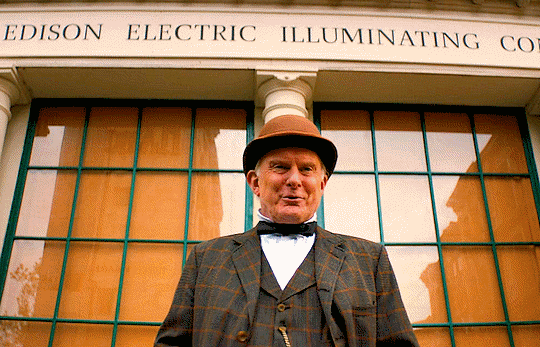
Edison, of course, is legendarily one of the biggest assholes in American history. However, to his credit, the man was genuinely brilliant. Coming up with or perfecting various contraptions and inventions, Edison was a dynamo. In 1889, he had the idea for a device that could capture and display visuals to accompany sounds from the phonograph (which he'd, of course, invented). He had a member of his think tank, William Kennedy Dickson, develop the device, and they created their own early video camera of sorts. With the combination of these two teams, amongst others here and there, the first films began distribution around 1893.
However, again, these were mostly capturing real-life footage. The first narrative films began around 1896, likely with La Fée aux Choux in that year. A minute-long film, this is arguably the first non-documentary to be produced, and would be the first of a new industry. And, fun fact, the first film to be directed by a woman, Alice Guy! After this, the Edison Manufacturing Company released the first commercially available film, The Kiss, and made buckets of cash. The film industry is born.
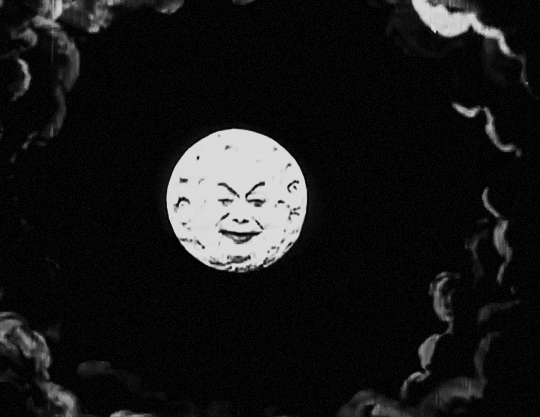
But to really hit the head on narrative film, you have to go back to France. There, illusionist Marie-Georges-Jean Méliès expanded the genre with creative sets and productions that took film into the realm of the fantastic. Inventing a number of basic tricks like dissolves and multiple exposures, Georges is the true pioneer of early film. His 1902 film, Le Voyage Dans La Lune (you know, the one where they land a ship in the Moon's eye) is considered a classic to this day, amongst other Méliès staples like Cendrillon and Le Manoir du Diable.
However, Georges isn't alone. The UK has a slew of filmakers entering the scene with their own efforts, while in the US, Edison's company is continuing their work as well. Most prominently for this story, perhaps, is the work of one of Edison's early cameramen, and therefore one of his first directors, Edwin S. Porter. Porter started with Edison in 1901, and was one of the first real film scholars. Taking from the other prominent directors of the day, he injected craft into the films he worked on for the company. At this point, one of the big things in American cinema was the brand new Western genre.

This is the point to clear up a bit of a misconception about Western films: The Great Train Robbery was in no way the first one. OK, so, the Western has its origins in Wild West shows, like Buffalo Bill's Wild West, which would travel around the world to show off the adventure and action of the American West. In fact, that GIF up above is Annie Oakley, who was filmed by Edison's Kinetoscope as an early film doing her sharpshooting act, which was a part of the show! Anyway, these exhibitions also traveled to the UK, where they made a massive impact. America was the land of the Wild West, and it arguably wouldn't shake that image until around World War II.
Because of this, the first Western films were actually filmed in England, not the United States! The first was Kidnapping by Indians in 1899, followed by A Daring Daylight Burglary in 1903. That film in particular inspired Potter, alongside an 1896 play called The Great Train Robbery, to make...well, you read the title of the review. That film is sometimes called the first Western film by mistake, but is usually forgotten in favor of Porter's film. In any case, though, the Western genre was born in the silent film era.
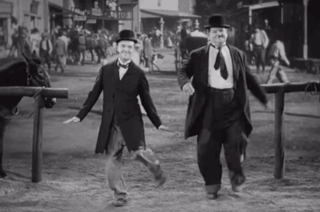
From that point, of course, history is made. Stars like Tom Mix, John Wayne, and Jay Silverheels make their way into the public zeitgeist. Characters like Bronco Billy, or the Lone Ranger and Tonto become household names. Classic films like Stagecoach and more bring the genre to new heights, while even comedians like Laurel and Hardy (above) get into the game with Way Out West. Even actual Western figures like Wyatt Earp became a part of the industry briefly, consulting on how things were in those wild days. It was a new dawn for film, and a unique era.
Of course, I've talked about Westerns before. Didn't get to cover much that month, but I covered a few films like Stagecoach. I even got some facts wrong in that recap about the first Western! Go figure. Anyway, that's a brief history of the Western film genre up to this point. But why cover this now? Well, this is also, for all intents and purposes, one of the first action films in cinema history. Ironically, the idea of action on screen would kick off an entirely different genre. Rather than spinning off into the Western, which became its own thing, the first iteration of the action genre was the adventure film, and guns were supplanted by another weapon.

...I really wanna talk about this film on this blog, because I adore it so much. Anyway, the swashbuckler was the next real action film genre to emerge, but that's a question for the next review, I think. In the meantime, let's get to The Great Train Robbery! This post is a little bit of a return to form for me, writing a recap and review with my 5 categories of criticism. This format might not be maintained with every film I talk about this year (however many that'll be), but I'll play it by ear depending on the film! And, so, without further ado...
SPOILERS AHEAD!!!
Recap

This recap is gonna be kinda weird, since as far as I can tell...there are no dialogue cards in this movie. A lot of what I'm writing here is a combination of inference and observation, as well as coordinating it with other synopses online after I'm done writing. So, yeah, this is an interesting one. Completely silent, as well.
A pair of bandits enter the room of a telegraph office, holding the clerk at gunpoint, and ordering him to write a missive of some kind before tying him up. The entire team of four bandits wait outside of the water tower used to refuel this old steam train, then sneak aboard. They immediately enter a firefight with a mail clerk on the train (who's apparently packing, damn), and kill him, then use a stick of dynamite to open a box that I assume contains valuables.
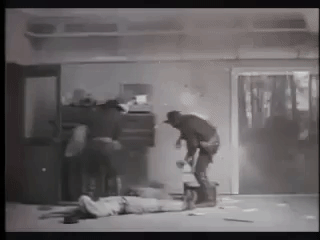
Two of the bandits climb to the top of the train, where one has a fist-fight with the fireman and...throws him off the train, damn! It's a dramatic throw, too. Anyway, once this happens, the train stops, and the bandits hold the passengers hostage aboard the train as the engine car is disconnected. The passengers are held up for their belongings, and...Jesus, guys, there are a LOT more of you than there are of the gunmen! Somebody just jump one of 'em!
Well, as if to answer my question, one of the passengers tries to run away, and gets shot in the back for his trouble. So, yeah, OK, I see the risk, but...I dunno, they only have so many bullets, I think you guys could take 'em. Anyway, the bandits escape, and the passengers immediately tend to the one who was shot. The bandits board the engine car and take off with their loot.
The party escapes into the woods a-ways down the train tracks, and meets up with their waiting horses. Meanwhile, the operator back at the station manages to get up and send out a message. His young daughter walks in and VERY smartly cuts her dad loose, making her the official hero of the film. She wakes him up, and we cut back to a dance party attended by some local lawmen. We get that Western trope where the lawmen shoot at a guy's feet to get him to dance, leading me to wonder if this is where that trope comes from?
The operator bursts in and tells the group of the trouble. They ride out to confront the bandits on horseback, but one of them gets shot in the process. Eventually, this leads to an all-out brawl in the woods, where the bandits are cut down as they count their loot. Good guys win, and the entire film ends with this classic shot of one of the bandits.
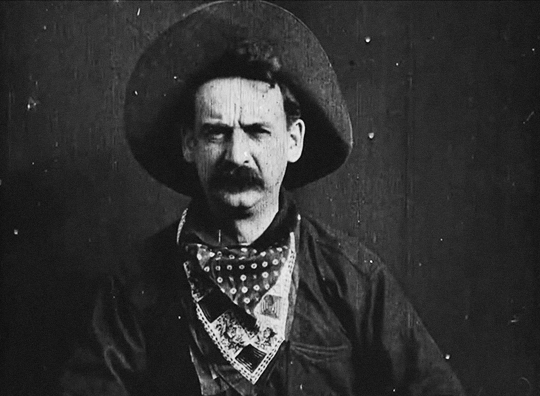
Review
So! Can I even review this one the way I would normally? I mean, probably; short films and silent films are still both films, after all, so it's not like it doesn't qualify. But there are some things obviously missing, or that need to be taken into context here. So, to go through it via bullet point method:
Cast and Acting - 7/10: Well, the actors are mostly forgotten, sorry to say; and while we know their names, none of them were actually credited in the film. The main character is arguably the bandit leader, as played by Justus Barnes, and possibly Gilbert Anderson as a few characters (including the dancer in the dance hall and the shot passenger), and Robert Milasch as the tied-up clerk (I think). Plus, it has arguably the first child actor in the form of Marie Snow, but that may need to be fact-checked. Still, they were all fine, especially for the time. Acting for no audience was sort of a new thing, after all. Hard to judge, this one.
Plot and Writing - 8/10: Hey, there is a plot, even if there's not really writing beyond a screenplay. Our writers here are director Edwin S. Porter and Scott Marble, who wrote the play this was based on. And for what it's worth, it's a simple plot. Men rob train, men get stopped. That's it. Not exactly Primer, this one.
Directing and Cinematography - 8/10: For what it's worth, I think Edwin S. Porter did a decent job in this outing. Again, this is a new doctrine entirely, so it's not like we're gonna find much creativity in either category here. Hell, according to some angles, Porter technically invented the concept of direction, but that's a very nuanced take on his role. At this point, directing just meant pointing the camera. Cinematographer (and yes, there was one) J. Blair Smith also did fine, as far as I'm concerned. Plus, hey...that last shot is iconic.
Production and Set Design - 9/10: Honestly, felt like I was watching a train robbery. So, it may feel a little Party City in terms of the bandit and lawmen costumes, but it also was authentic, so...yeah, high marks for this one.
Editing - 9/10: Normally, of course, I'd put music in this category, but...well, there's no music. So, it falls to editor...uh...oh. Shit. Wait, there's no actual editor for this one? I guess the closest I can get is Edwin S. Porter, who really carried this film. And there is editing, there has to be. After all, it managed to tell a story with literally no dialogue. No cards, no mouthed word, no music, nothin'. And yeah, I really wish that first or last one was in here at least, but the film still works without it.
So, yeah, in the end, that's an 84% for me! Which is probably causing some elderly film critic's tenderly cared-for stress-rage aneurysm to finally pop, but hey - it's how I feel. Great piece of history, completely free, and required cinephile viewing! Just go to Wikipedia or the Library of Congress.
OK, with that short-fill warm-up finally done, let's proceed through action film history! Good to be back!
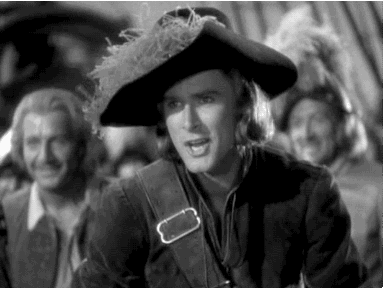
Next: Captain Blood (1935); dir. Michael Curtiz
#user365#365 days 365 movies#365 movies 365 days#365 movie challenge#action january#action#action movie#western#western film#action film#action genre#edwin s porter#edwin s. porter#the great train robbery#the great train robbery 1903#365days365movies#silent film
5 notes
·
View notes
Text
The Ever Lasting Legacy Of Early Cinema
Most if not all technical advancement is built on the foundation's successful history as well as how the general public perceives it. Particularly in the case of the film business. The notion to create the illusion of movement in images utilizing the optical phenomenon known as persistence of vision gave rise to the industry. The public's intense curiosity in witnessing this new "deceive" and learning how their eyes may be tricked by the persistence of vision was the first indication that this field could be an enormous success both scientifically and commercially. https://www.tumblr.com/qu-film-history-to-1968/727814093683195904/week-2-phantasmagoria-and-the-manufacturing-brody?source=share). This
Furthermore within this idea of discussion and focus with giving even more indepth importance and proof is the invention of cinema in the latter part of the nineteenth and beginning of the twentieth centuries represented a significant advancement in the time period by enabling the capture and projection of moving images. The early motion photograph cameras made by Dickinson, Porter, and Hepworth, Edison's Kinetoscope, and the Cinematographe developed by the Lumieres lay the groundwork for the contemporary filmmaking age. Although they have made significant advancements in decision, picture quality, and portability, contemporary cameras and projectors are direct successors of earlier ground-breaking inventions. Instead of documenting reality, early film explored the clever potential of transferring photos. Modern visual storytelling methods were inspired by Georges Méliès' innovative use of computer graphics. His proficiency with stop-motion animation, multiple exposures, and in-camera effects continues to inspire modern filmmakers.
The magic lantern is an example of pre-cinematic technology that demonstrates how cinema distribution has evolved over time. During the Civil War, the magic lantern an early version of the projector was able to project images from glass plates onto a screen or other light-colored surface. According to Robert Marcus, these are “cinema before the innovation of the movies” (58 https://qu-film-history-to-1968.tumblr.com/post/727842782720458752/week-2-the-magic-lantern-capturing-the-magic). This demonstrated that people would pay to see art and that it can be presented through entertainment. Between 1830 and 1910, the first filmmakers tried out various cameras and methods for taking and turning still photos into moving images. Every method that appeared to be effective was adopted as precedence in the film industry. Every single contemporary filmmaker takes their cue from the pioneering practitioners of this era. A specific example and idea that comes to mind for relating to the idea of this would be in the film Spider-Man No Way Home director John Watts, he is the first marvel director to direct and produce a MCU trilogy without being replaced, as well a notible impact on the directors unique envision and take of utilizing his own form of cinema and directing with envisoing would be the condo fight scene in the film and how it was executed and structured as well the behind the scenes of the film with that specific part being shown and the visual process of it all went into motion and play. Without a doubt the influence of 100 years with cinema and hollywood especially earliest of cinema is seen as a staple and monument with this film and the director of it as well taking specific ques and nods from other iconic filmakers and directors etc. The shot within the first 50 seconds of the film pans to an upclose and personal perspective of tom hollands Peter parker walking throughout the condo floor being super focused and aware of his surrondings while trying to tackle the weird and sensation of his spider sense warning of upcoming danger before it even occurs with every panning camera and movement giving a heavy feet and drag feel as well of the audience almost being in the moment with the character being very distressed to the point of using his instinct and reflexes.
https://www.youtube.com/watch?v=vG7-hKnYcxQ
https://www.youtube.com/watch?v=gTUVdjFb2Co
0 notes
Text
Celebration of Transgender Stories In U.S. Cinema

In January of this year, trans activists, allies, and artists from the entertainment industry gathered to discuss the current state of transgender representation and inclusion in television and film.
Hosted by the Provincetown Film Society and the Saint Joseph’s Arts Society, Changing the Cultural Narrative: Trans Stories in the U.S. Entertainment Media brought together actors, producers, casting directors, and intellectuals to participate in a day of panels and networking - it was nothing short of inspiring.
Pushing Boundaries
A monumental shift in the depiction of transgender people on television and film has occured in large part because of the pioneering efforts of indie filmmakers who supported the LGBTQ community long before mainstream media ever did.
In a panel moderated by Marc Smolowitz, award-winning filmmaker and founder of 13th Gen Films, trans, non-binary, and gender non-conforming producers came together to share their voices and stories.
“Filmmaking is not narrow, it has a social impact,” said filmmaker André Perez.
The focus of Perez’s work is on documenting transgender history in America. One of his most recent projects is a transgender oral history that’s already captured the voices of over 100 trans elders throughout this community.
“I want my work to go beyond just raising awareness and support the trans community in finding more resources,” says Perez during the panel discussion.
Perez says he’d like to see mainstream media organizations support the visions and voices of trans artists, a marginalized group who often struggle to find funding for their artistic endeavours.
Many of the producers speaking on the panel complete films with little or no funding, often working with what they refer to as micro-budgets, which is usually around $250,000. Xicanx trans filmaker Stormmiguel Florez completed his latest project, “The Whistle,” with only $50,000.
The Politics of Casting
Prominent figureheads from throughout the film community spoke about the changing landscape of LGBTQ representation and the growing desire for the industry to hire trans creatives, especially on projects that don’t exploit or focus on their trans experience.
It took decades for mainstream media networks and film production companies to acknowledge the existence of LGBTQ people on-screen.
In this regard, Ellen Degeneres was truly a revolutionary when she came out on her eponymous sitcom in 1997. This act of bravery helped pave the way for shows like “Will and Grace,” which depicted openly gay characters and their relationships.
It’s true that these representations weren’t perfect, less stereotypical character development would come later, but for that period of time it was progress.
Now, the trans community is fighting the same battle, working to dodge clichéd character portrayals and trying to find (and create) those roles that simply show a human experience.
Ann Thomas is the founder of Transgender Talent, an agency that exclusively represents transgender actors. Her company represents more transgender actors than the entire industry as a whole.
Her position as talent agent goes far beyond securing roles for trans actors in television and film. She also reads through the scripts, reviewing potential parts for her clients, to make sure the role is artful and not damaging to the trans community.
Thomas says transgender women are often portrayed as sex workers in the media and when she comes across a sex worker role in a script, she will scrutinize the exact nature of the role. She says often times these roles feature violent on-screen sex acts.
“86 percent of transgender women aren’t sex workers,” says Thomas. “It’s time to change that narrative and show that trans people can play anything.”
Thomas always wants to see a trans person in a trans role, but she understands that sometimes important stories that need to be told might only be made with a well-known non-trans actor to draw in the funding to produce the film.
Such was the case with the 2017 film, “Anything.” Matt Bomer, a cisgender male actor, replaced a trans actress to save the film from losing financial backing.
“Sometimes it takes diplomacy, not just advocacy” says Thomas. “You can shut down streets with protests and marches, that works to a degree, but you need a lot of long-term diplomacy work too.”
Thomas says when films stumble in their depictions of transgender folk, or perpetuate stereotypes, it should always be viewed as an opportunity to educate.
Russell Boast, President of the Casting Society of America, has been an advocate for the LGBTQ community throughout his career. In this moment, when queer media is having a resurgence, he says it is important to strike while the iron is hot.
“I need the kids of today, especially those in middle America, to see themselves represented and to see what the world looks like now, not tomorrow, right now,” says Boast.
Boast wants to see more trans actors working in front of the camera, but says resources that would help them succeed at landing roles, like audition lessons, are often-times inaccessible to most of the trans community because of cost.
“I want everyone to get work and there is support out there to make it possible,” says Boast.
Earlier this year, Boast was able to organize free auditioning lessons for the trans community. Funded by the Screen Actors’ Guild, nearly 800 folks across 15 different countries received those lessons.
The Future
“I’ve never seen a trans teenage witch in a movie before,” says trans actress Zoey Luna.
Luna will change all that soon, as she has just been cast in Sony’s reboot of the ‘90s cult classic “The Craft.”
Luna grew up idolizing both Miley Cyrus on “Hannah Montana,” and singer Ariana Grande. She says she always knew she would be a star, but that it has become so much more than that for her.
“I’m doing this for other kids,” says Luna. “I want to show we are more than just our trans experience, I’m out here working hard for us.”
Luna, and other trans actors, are truly making history.
In 2019, Zach Barack was the first openly transgender actor to be cast in a Marvel film, “Spiderman: Far From Home.”
“It’s an honor and responsibility,” says Barack. He says what is truly impactful about his role in the film is that the character’s gender identity is never discussed.
“Gender identity is just a part of life, it’s not the main part of it,” says Barack.
We are lucky enough to live in a time when true democratization of cultural production is flourishing. With the advent of streaming services, the proliferation of platforms for personal expression such as YouTube, and greater access to technology in general, the gatekeepers don’t hold nearly as much power over visibility as they once did in the past.
The visionaries at this event are pioneers for the transgender community. Their work underscores the fact that the whole industry needs an overhaul when it comes to objectifying bodies. We are too focused on the physical characteristics and not on the portrayal of the universal human experience. No one should be defined by their genitalia or any other physical characteristic. An even greater diversity of depictions is necessary to topple old power structures.
The Gender Spectrum - Terms To Get To Know

Written by Holden Aguirre -- Holden is a Journalism Major at San Francisco State University minoring in LGBT Studies. As someone who thrives in a diverse environment, Holden transferred from American River College in Sacramento to pursue interests in film, music, the arts, and education.
1 note
·
View note
Text
Paul de Nooijer , filmaker and photograph announced his retirement in 2012. He did not want to repeat himself. So he focussed on his cooperation with his son Menno de Nooijer who is an artist too. De Nooijer is/was a pioneer in dutch staged photography and he even made some video clips for MTV. You can consider his photography and films like short stories in images in which he often uses stop-motion techniques.
youtube
This medium is hard to translate into a printed publication, but some efforts have been made and these are available at www.ftn-books.com
OLYMPUS DIGITAL CAMERA
OLYMPUS DIGITAL CAMERA
Paul de Nooijer (1946) Paul de Nooijer , filmaker and photograph announced his retirement in 2012. He did not want to repeat himself.
0 notes
Photo

▶️WWW.DJTOOLS.ES ALBUMS, DJ SCRATCH TOOLS, BATTLE BREAKS, SAMPLES, BEATS, ACAPELLAS, DRUM KITS, LOOPS AND MORE Get the full discography available. ➡️➡️NOW 50% OFF⬅️⬅️ RESOURCES FOR DJS, 🎚️🎛️🎧 BEATMAKERS, FILMAKERS, WEB DESIGNERS, TV, RADIO.... #sounds #djing #dj #download #turntablism #beats #loops #scratch #skratch #mix #turntable #fader #serato #traktor #virtualdj #numark #pioneer #rane #vestax #ortofon https://ift.tt/2R8sg6c https://ift.tt/1HNGVsC
0 notes
Text
Pioneering Ski Filmmaker, Warren Miller Has Died, Aged 93
New Post https://obodoinfo.co/pioneering-ski-filmmaker-warren-miller-died-aged-93/
Pioneering Ski Filmmaker, Warren Miller Has Died, Aged 93
Skiing adventure filmaker, Warren Miller has died. He died at his home in Orcas Island, Washington, on Wednesday, aged 93.
Miller made over 500 skiing films and became a fixture in the skiing community with his Warren Miller Entertainment films, and for 60 years produced one feature-length ski movie a year, which he would show in theaters near ski resorts. The films were conceptualized, directed, and narrated by Miller from 1949 until the 1990s. While he focused heavily on snow sports, he also had a passion for surfing and sailing, according to his website.
SUGGESTED: Sportscaster, Keith Jackson Dies Aged 89
In a statement posted to Miller’s Facebook page, his family wrote that “While this is a time of profound loss, we are comforted that Warren’s life touched so many. Warren made the extraordinary seem accessible, and his legacy of freedom, humor, and adventure endures through all of you.”
He sold WME in 2007, and hasn’t been actively involved in its films since 2004. Miller was also an artist and author, having written 11 books and 1200 columns. In 1978, he was inducted into the U.S. Ski Hall of Fame
He is survived by his wife, Laurie, and four children.
0 notes
Text
The Godzilla vs. Hedorah short yesterday had a big “Ultraman” feeling to it. Not just because it had a director from Ultraman Z, but because that short felt like the kind of thing Tsuburaya uploads often to their youtube channel.
Godzilla being more mainstream globaly than Ultraman, I wonder how many people who felt hyped by the Godzilla short aren’t aware of Tsuburaya and the Ultra series, of how they keep creating tons of “traditional” tokusatsu content even when other series like Godzilla lie dormant, how they keep pioneering filmaking techniques and perfecting themselves, to the point of coming up with fights that feel like the closest possible thing to live-action Dragon Ball Z.
If they liked the Godzilla vs. Hedorah short, they have tons upon tons of enjoyement still waiting for them right now. Tsuburaya has been doing stuff to expand Ultraman’s reach in recent years, I hope one day they become as popular as they deserve on this side of the globe too.
16 notes
·
View notes